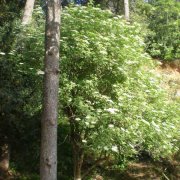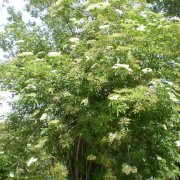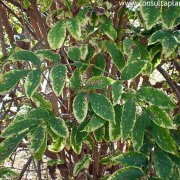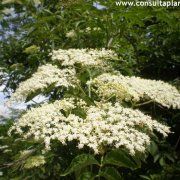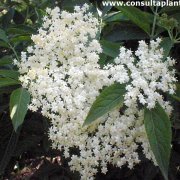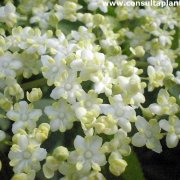Care of the shrub Sambucus nigra or European elder |
|
The genus Sambucus, family Adoxaceae, comprises 20 species of shrubs and trees native to almost every continent. Some species are: Sambucus nigra, Sambucus velutina, Sambucus racemosa, Canadian Sambucus, Sambucus javanica, Sambucus australis. Common names: European elder, European black elderberry, Elderberry, Elder. This species is native to Europe and North America. They are shrubs or deciduous trees with hollow stems filled with pith. They have opposite, pinnate leaves of deep green color. The small white flowers appear in large inflorescences 20 cm (7.87") in diameter. They bloom in summer. They produce very decorative dark and globose fruits. This fast-growing plant is used as isolated specimens and forming bushy groups. European elder is not recommended for gardens with children since the plant is toxic by ingestion. It's ideal for coastal gardens and for cities. Sambucus nigra grows in semi-shade and full sun exposures. It resists frost. Elderberry prefers well-drained soil with a little organic matter. Planting is done at the end of winter. Water abundantly in summer (especially if it's very hot) and reduce watering the rest of the year, especially in winter. Fertilize every 20 days during the summer with mineral fertilizer. European black elderberry is a very resistant plant to the usual pests and diseases. Sambucus nigra is propagated from seeds sown in spring in a glass seedbed, by woody cuttings in autumn or semi-woody in summer. |
Images of the shrub Sambucus nigra or European elder |
Find plants
Sambucus nigra or European elder | Care and Growing
© 2025 FavThemes
